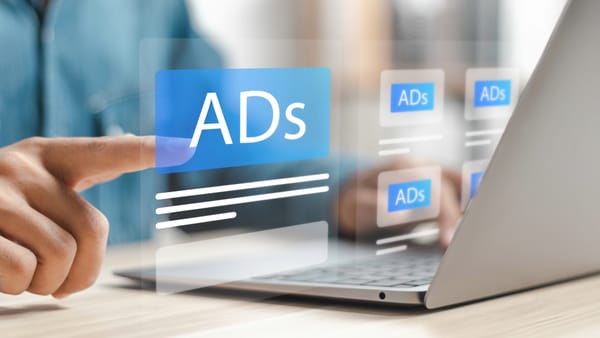Shopify Facebook Ads Guide for Beginners Chapter 3: Planning Your Facebook Ads Campaign

Chapter 3: Planning Your Facebook Ads Campaign
Creating an effective Facebook Ads campaign starts with a solid plan. Without a clear strategy, you risk wasting your budget on ads that won’t achieve the desired results. In this chapter, we’ll walk through the key steps to planning a successful campaign, from setting goals to choosing the right objectives and mapping out your ad funnel.
3.1 Define Your Campaign Goals
Before you start creating your ads, you need to define what you want to achieve. Your campaign goals will guide your overall strategy and help you measure success. Here are some of the most common goals for Shopify merchants:
- Drive traffic:
- When to Focus on This Goal: If your store is new or you’re launching a new product, driving traffic to your store should be a primary objective. The more people visit your store, the higher the likelihood they’ll convert in future campaigns.
- How to Approach It: Create engaging, curiosity-driven ads that link to your blog posts, product pages, or landing pages. Use Facebook Pixel to track visitors so you can retarget them later.
- Example Tip: Offer a free resource (like a guide or quiz) in exchange for email addresses. This way, you’re not only driving traffic but also building your email list for future marketing efforts.
- Generate leads:
- When to Focus on This Goal: If you’re in the early stages of building your audience, lead generation is crucial. This allows you to collect valuable contact information for retargeting and email marketing.
- How to Approach It: Use Facebook’s Lead Ads format to collect email addresses directly within the platform. Offer something of value, like a discount code, free trial, or exclusive content, in exchange for email sign-ups.
- Advanced Tip: Sync your lead forms with your CRM or email marketing tool (like Mailchimp or Klaviyo) to automate follow-up sequences. This can help you nurture leads and convert them into customers.
- Boost sales:
- When to Focus on This Goal: Once you’ve driven traffic and gathered leads, your next goal should be to convert that audience into paying customers.
- How to Approach It: Use Conversion Ads to target users who have shown interest in your products. Retarget visitors who’ve engaged with your store but haven’t made a purchase, and offer incentives like limited-time discounts or free shipping.
- Example Tip: Create urgency with your ads by using phrases like “Limited Stock Available” or “Flash Sale Ends Soon.” Pair this with retargeting ads for abandoned carts.Increase brand awareness: Especially useful if you’re launching a new product or store.
- Increase Brand Awareness:
- When to Focus on This Goal: If you’re launching a new product or entering a new market, brand awareness should be your top goal. This is particularly useful if you’re selling a unique product or entering a competitive niche.
- How to Approach It: Use Video Ads or Carousel Ads to showcase your product in action. Focus on highlighting your brand’s unique selling proposition (USP) and tell a compelling brand story.
- Advanced Tip: Use Facebook’s Brand Lift Study feature to measure how much your ads are increasing brand awareness. This can help you gauge whether your ads are truly making an impact.
3.2 Choosing the Right Campaign Objective
Facebook Ads Manager offers several campaign objectives, and choosing the right one is essential for the success of your campaign. Each objective aligns with specific stages of the customer journey.
- Awareness:
- When to Use It: Best for reaching new audiences who are unfamiliar with your brand. This is ideal for brand-new Shopify stores or for launching new products.
- How to Approach It: Focus on engaging and visually appealing ads that introduce your brand or product. Use eye-catching videos or carousel ads to showcase your product range.
- Advanced Tip: If you’re using the Awareness objective, combine it with a Lookalike Audience based on your most valuable customers. This way, you’re reaching users who are more likely to be interested in your brand.
- Traffic:
- When to Use It: This objective works well if your goal is to drive visitors to your Shopify store, especially if your store has well-optimized landing pages or blog content to convert visitors.
- How to Approach It: Create ads that encourage clicks, such as ads with strong, curiosity-driven copy or offers (e.g., “Discover the Best Fall Fashion Trends”).
- Example Tip: Make sure your landing page aligns with the message in your ad. If you promise a sale in your ad, ensure the landing page clearly highlights the sale and makes it easy for visitors to shop.
- Conversions:
- When to Use It: The Conversions objective is ideal for driving sales, sign-ups, or other high-value actions (like adding to cart or initiating checkout). This is the most recommended objective for Shopify merchants looking to boost sales.
- How to Approach It: Use the Facebook Pixel to track conversions and optimize your ad delivery to people most likely to convert. Create ads with a strong call-to-action, such as “Shop Now,” “Get Yours Today,” or “Limited Offer.”
- Advanced Tip: Use Facebook’s Optimized Conversions for Value feature, which helps Facebook deliver your ads to users who are more likely to make a higher-value purchase, not just any purchase.
For most Shopify merchants, the Conversions objective is the best starting point.
3.3 Mapping Out Your Funnel
Successful Facebook Ads campaigns aren’t just about running standalone ads—they’re about building a funnel that nurtures users through different stages of the buyer journey. Here's how to approach your Facebook Ads funnel:
- Top of Funnel (TOFU): Attract new visitors who don’t know your brand.
- Goal: Introduce your brand to new users who have never interacted with your store before.
- How to Approach It: Use awareness or traffic campaigns with broad targeting to cast a wide net. This stage is about generating interest, so focus on visually appealing creatives that showcase your brand or product.
- Example Tip: Use Video Ads to tell your brand story or showcase product benefits. Video content tends to perform well at the top of the funnel as it’s more engaging and can quickly introduce your brand to new users.
- Middle of Funnel (MOFU): Retarget users who have visited your website but haven’t purchased.
- Goal: Retarget users who have visited your website, engaged with your content, or followed you on social media but haven’t made a purchase yet.
How to Approach It: Use Custom Audiences to retarget users who have visited specific pages (e.g., product pages) or engaged with your Instagram or Facebook pages. Focus on educating users about your product or offering social proof (e.g., customer reviews, testimonials).
Example Tip: Use Dynamic Product Ads (DPAs) to automatically show users the exact products they viewed on your site. Personalized retargeting significantly improves the chance of conversion.
- Goal: Retarget users who have visited your website, engaged with your content, or followed you on social media but haven’t made a purchase yet.
- Bottom of Funnel (BOFU): Convert Users Ready to Buy
- Goal: Drive conversions from users who are close to making a purchase. These are users who have added products to their cart or engaged in high-intent behaviors.
- How to Approach It: Use Discount Offers, Limited-Time Sales, or Free Shipping to encourage users to convert. At this stage, urgency and



